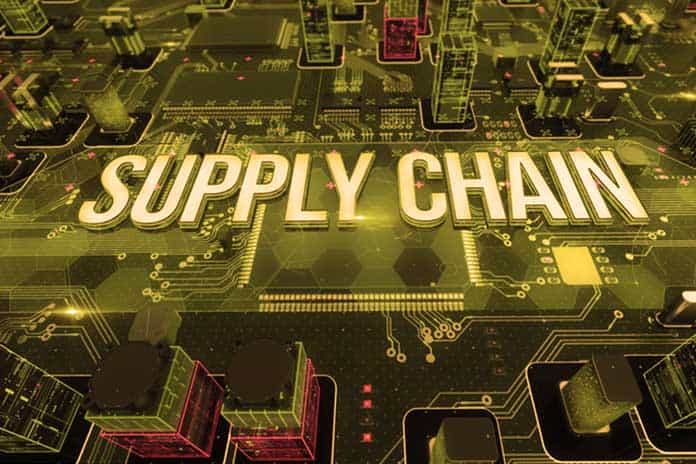Within Supply Chains, technology is becoming more and more complex. Here are the most relevant trends that managers need to consider for 2020 and the years to come.
while business models continually adapt to market needs, Supply Chain technology in 2020 must also adapt accordingly, which suggests a period of great change: “Supply Chains have gone out of their traditional patterns and this means that associated technologies are also constantly evolving,” said Andrew Stevens, Senior Research Director at Gartner .
“For example, a Supply Chain in the Food & Beverage sector is no longer ‘simply’ a Retail Supply Chain, but also includes agri-tech for procurement, transportation-tech for distribution and so on”. Despite this, some technologies and strategies have far more prominence than others. Here are some very relevant current trends.
1. Businesses are becoming more selective about data
Companies are focusing their efforts on identifying and using only genuinely relevant data. “One of the main trends in the current supply chain can be summed up as ‘the data that matters’,” said Steve Pillsbury, director of PwC. An example is the so-called “change data “, ie, data representing a deviation from the standard. By collecting and analyzing only those, managers need fewer analytics resources and can obtain information more quickly, as less data needs to be transferred and analyzed.
“Businesses are still overwhelmed by the data they have,” Pillsbury said. “They must understand which are important and which problem to address them to find concrete solutions”. Unfortunately, determining which data is relevant is not easy, and managers can sometimes overlook important factors. First of all, it must be considered that finding new data can be as vital as distilling existing ones, and then there is the whole question of “short-sighted” data, which can lead to entirely or partially wrong results.
2. AI in 2020 increases its relevance in Supply Chain technology
Among the 2020 trends in supply chain technology is automation via artificial intelligence. The need to detect and work on internal and external “data that matters”, together with the growing need to automate processes, should accelerate the adoption rate of AI and Advanced Analytics solutions, said Abe Eshkenazi, CEO of the Association for Supply Chain Management. “We will see a major shift towards automated decision making that leverage predictive and prescriptive analytics, including AI,” Eshkenazi said.
3. Data Use Cases are growing
Companies are experimenting with the use of data beyond traditional applications and ways. “Purchasing data, for example, will be used for purposes that go far beyond traditional ones,” said Rubiés Enríquez, purchasing director of Cimpress, an Irish company that deals with mass customization. “One of these use cases will be the calculation of the carbon footprint; vice versa, carbon emissions will become a new decision-making criterion for purchases.”
4. Collaboration in the digital supply chain becomes a critical factor
An emerging supply chain trend is the attempt to build highly collaborative ecosystems. However, establishing this degree of trust among stakeholders is no small task, and customer inquiries add further complexity. Buyers’ demand for transparency and, conversely, partners’ desire for confidentiality create a lot of friction that slows progress, Pillsbury said.
“There is a certain distrust among supply chain members, who continue to have limited trust and keep key data to themselves,” Pillsbury said. “The fear is above all related to who should monetize them: the supplier, the manufacturer or the customer.”
Take, for example, the container shipping sector changes, a sector characterized by demands for sustainability and the consequent need to share data between partners. “Shipping line alliances will require an intense amount of data consolidation and sharing to unite operations and support the interoperability of these networks,” said Mike Wychocki, CEO of EagleRail Container Logistics., a manufacturer of automated equipment for lifting and moving containers. “There will be cooperative and technically advanced partners in container shipping and intermodal transport in the future, and their success will revolve around capturing, analyzing, and sharing key data,” Wysocki said.
5. The pressure for interoperability is growing
The technologies needed to meet the Supply Chain’s challenges will have to work in synergy rather than disjointly. According to a recent Gartner report, the leading technologies for the Supply Chain in 2019 were AI, Advanced Analytics, IoT, Robotic Process Automation, Digital Supply Chain Twin, immersive experiences, and blockchain.
“These technologies will continue to trend next year and beyond,” said Stevens. “By 2023, however, at least 50% of these technologies will no longer be used independently, but as a supplement to existing solutions,” said Stevens. “The ability to work in synergy and in a complementary way will be essential.” Essentially, if a technology doesn’t interact well with the ecosystem, managers are unlikely to buy it. Instead, they are likely to eliminate it.
6. More and more technology in the Supply Chain
According to the same Gartner report, some new technologies will be added to the Supply Chain arsenal this year. ” Edge computing, 5G and the convergence of IT and OT will be on the rise,” said Stevens. “Dark Warehouses, 3D printing, next-generation RFID, near-field communication and integration technologies can also add to current technology trends.” While many of these technologies and their use cases are not yet mature, supply chains are changing, Stevens said. “For example, companies are becoming increasingly inclined to use blockchain to manage every aspect of a product’s lifecycle.”



